No product is all good or all bad. Sometimes a camera, for example, may have a great sensor but poor ergonomics. Sometimes a company may make great products but act tone deaf when it comes to customer relations. Some stress technology, some stress design. It takes all kinds, not just among people but apparently among photographic equipment companies as well.
As 2012 comes to a close it’s fun if not also instructive to look at the companies and products that stood out this past year, both for being among the best and among the worst. If I happen to gore your particular favourite ox this time round, that’s OK. Wait till next year’s summary, when I’m bound to make new friends as well as enemies.
The Best of 2012
Nikon D800/E
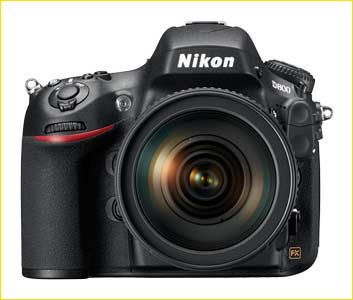
There’s no question that Nikon whacked the entire photographic industry upside the head when they launch the 36 Megapixel full-frame D800/E. Not only were the specs exciting, but the camera came out on time, it wasn’t overpriced, and it delivered the goods in terms of image quality and overall performance. What more can a company or its customers want? Nikon has claimed the high end of the stills industry, and for the time being is enjoying an increasingly dominant position. Its sourcing of the best sensors available from Sony certainly plays a role in this.
Canon has been distracted by the video side of the business, and while they are building some very attractive products in that segment seem to be ignoring the high end of still imaging. Whether this is a long-term winning strategy remains to be seen. Nikon seems to have little interest (nor history) in video, and though their DSLRs have competent video capability this is no longer where the action is. Video has now moved on to large sensor equipped camcorders.
Nikon D600
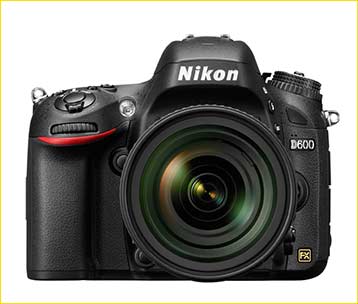
Nikon continued to press competitors and please customers in 2012 with the D600, a 24 Megapixel full-frame camera for under $2,000. This created a real stir, because for the first time it brought a competent large sensor high resolution camera to buyers who might have otherwise just considered an APS-C camera, if only due to price.
Sigma DP2 Merrill
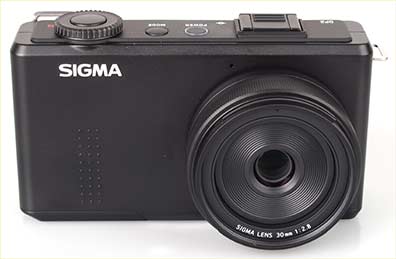
Sigma finds themselves on both the best of and worst of list this year. Taking the sensor from the ill-fated SD1 DSLR (see below) and putting it into a coat-pocket sized body, along with a fantastic quality lens, with theDP2 MerrillSigma has created a pocket battleship when it comes to image quality. Hands down, this is overall the smallest camera with the highest image quality at the lowest price available. Yes, it’s even sharper than the Sony RX1. The camera has some downsides, including poor battery life, abysmal raw software, and some frustrating controls, but these pale in comparison to its shear resolution and raw image quality.
Sony RX100
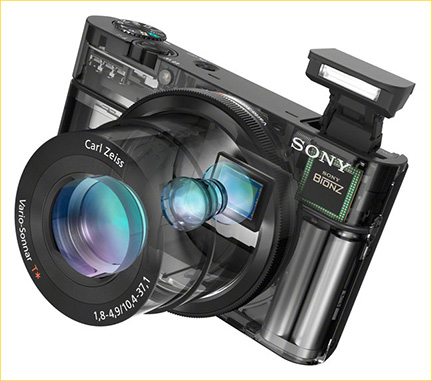
Sony has recently become a leader in sensor design and fabrication, providing sensors not just to itself but many of its major competitors. And, few would disagree that over the years Sony has been a master of making small high-tech gadgets of all sorts.
With digital photography as one of its “must win” market segments, the past couple of years have seen tremendous innovation from Sony, and in 2012 nothing summarized this better than the shirt-pocket sizedRX100 camera. Put in a comparatively large 1″ sensor, give it 20 Megapixels and a decent Zeiss zoom lens, and you have created a best-seller that has competitors scratching their heads on how to respond.
And, to answer the unspoken question, I’ve decided to consider the newSony RX1as a 2013 competitor because it only started shipping in December. Otherwise it would have been in the winner’s circle as well. But 12 months now stretch ahead of us, and it will be interesting to see if the RX1 holds its potential place as the best compact camera of 2013.
Indeterminate Status
If I don’t mention certain companies, either among the Best or Worst, I’m bound to hear about it. So here are a few which neither rose to great fame nor sank into ignominy this year.
Panasonic and
Olympus
The Panasonic GH3is a curious beast. My first inclination was to appreciate the work that Panasonic has done in strengthening their flagship camera. But, on further reflection it seems to me that with its greater size and bulk the GH3 has stepped outside the self-imposed bounds that CSC makers have created. MFT lenses are small and light, and that’s the acceptable trade-off that photographers make for using a smaller sensor. But with the GH3 the body size advantage has been lost since the camera is no longer small, and is actually larger and heavier than some APS-C DSLRs.
I can’t help but see an analogy to Honda, who years ago with the Civic made one of the first small imports, but then with each passing year and model iteration Honda made them larger and larger until they are now considered mid-sized.
Olympus, the other MFT camera maker, has taken a different path than Panasonic, and with this year’sOM-D E-M5has stayed true to its historical roots as the maker of small high quality cameras. I believe that Olympus is on a roll, and we’ll be seeing some exciting product from them this coming year.
Fujifilm – The X Files
Now that Fuji is out from under selling re-jiggered Nikons they have seized the new CSC marketplace as fresh and fertile ground for expansion into the camera market. Their new models have tripped once or twice, but are definitely headed in the right direction. There’s a lot to like in the new X line.
When it comes to sensors Fuji likes to try out different colour matrix array configurations and their latest seems to offer great promise. It’s just that even their own software isn’t able to extract the best performance, and as this is written Adobe, Capture One and Apple have yet to crack the code. When they do this new matrix design will do well for Fuji.
NB: I’ve been told that a new release of Capture One 7, due in early January, 2013 will provide superior support for Fuji X Files. Watch for it.
The Worst of 2012
Sigma SD1

I won’t pour too much salt on the wound, but what a fiasco the launch of theSigma SD1turned out to be. Intended as a $2,000 camera, senior forces within Sigma Japan decided prior to launch that the SD1 was a medium format competitor, and therefore should be priced like one. It came out with a list price over $9,000, a street price of about $7,000, and then it quickly sank into ignominious obscurity.
To add insult to injury Sigma sales people pushed the cameras on their dealers at the initial high price, and when few sold at this absurdly high price dealers were eventually forced to liqidate them below cost. Reportedly, this left a bad taste in dealer’s mouths.
Many months later the price was dropped to about $2,500, and today the SD1 is selling in the US for $1,750. But that ship has long sailed, and a very fine camera lost its possible place in the sun due to bungled marketing. This has therefore dimmed sales for the otherwise fascinatingDP2MandDP1M, which use the same sensor.
My advice to Sigma (unsolicited I know), is to reboot the whole camera line with a fresh product relaunch. The bad taste of the botched SD1 launch can be overcome. The Foveon sensor has so much potential that it’s a shame to see it married to a camera line and brand which hasn’t given it appropriate exposure (so to speak). Also, as Sigma undoubtedly knows, with in the next 18 months one of the major sensor and camera makers is going to release an advanced multi-layer sensor which bypasses the Foveon patents , and at that point if Sigma hasn’t re-established a competitive and refreshed X3 camera line the chances of success for future Sigma cameras are much diminished.
Blackmagic Cinema Camera
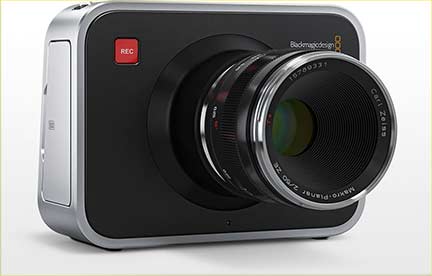
Sometimes having a potentially great product, a highly competitive price, and good marketing isn’t enough. In the case of Blackmagic, a highly regarded Australian maker of electronic video accessories, their launch of theBlackmagic Cine Camerain early 2012 could not have been better received. But then the months dragged by, and other than a handful of units sent to reviewers and a few lucky individuals who placed early orders, very few cameras were actually shipped.
The short version of the story is that a sub-supplier of sensor cover glass screwed up, and it took many months to determine the exact cause of the problem and to set it right. In December, as this is being written, there are literally many hundreds of people around the world who ordered the BCM more than six months ago and who have not seen their cameras as yet.
It’s a sad tale of what can go wrong when small companies, no matter how good they are, venture into new product segments and find themselves let down by external suppliers. I wish Blackmagic luck with getting this very promising new cine camera back on the rails.
Hasselblad Lunar

OK, this rating is a slam dunk. I’ve not spoken to a single person since Photokina in September that does anything but shake their heads in sad disbelief when theHasselblad Lunaris discussed. Is this what Victor Hasselblad would have wanted his company marketing in 2013? A Sony NEX7 covered in exotic leather and wood? Somehow I think not.
But Hasselblad’s new venture capitalist owners find themselves between a rock and a hard place. The medium format market is a tough one, and though some companies are doing OK, many aren’t. The only competitor left making MF backs is the Phase One / Leaf / Mamiya group, which as we know is now really all one company. There’s Leica with the S2, and Pentax with the 645D cameras, and that’s about it. Oh yes, add a few European cottage industry tech camera makers, and that’s the whole industry. My educated guess is that the entire industry sold less than 10,000 cameras and backs during 2012. At high prices, mind you, but this is not exactly a growth industry or market segment, though some companies are reported to still be doing quite well. To put things in perspective, Canon, for example, makes more DSLRs a day then the entire MF industry makes in a year.
So what are Hasselblad’s new owners to do? Diversify, of course. But designing a new camera / lens system is a very expensive, even daunting proposition. It can costs $5 – 10 Million and take several year to produce a new camera, and in the meantime the industry’s 800 pound gorillas are forging ahead with new technologies. Designing and making cameras is now about being a player in the consumer electronics industry, and only mega-corporations have the deep pockets, R&D, technology, and marketing reach to do so profitably. (And recent financial statements from Sony and Panasonic tell us that this latter assumption isn’t always a sure thing either).
Oh yes, one more thing. I’ll bet dollars to doughnuts that by the time the first Hasselblad Lunar actually ships the NEX 7 will be close to its best-before date and an updated model will be on the horizon. Sony will be laughing all the way to the bank. Hasselblad, not so much.
December, 2012
You May Also Enjoy...
SMA Workshops
Winter 2012 – 2013 ScheduleSORRY – SOLD OUTAccepting Waitlist Requests San Miguel de AllendeDuring winter 2012 – 2013 I will be teaching three Master Class
